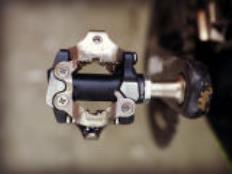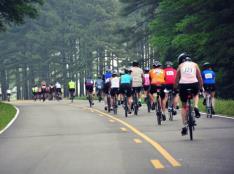Wicks did a terrific job of time management—she was only off the bike 23 minutes despite racing without a crew.
Group Riding
Many ultra events allow group riding, which has several advantages. You can work together and save energy. You have people to talk with and may make new friends. During hard or boring sections you can talk with each other to keep your spirits up. If you have a mechanical or other problem you can get some help from another rider.
However group riding also has some disadvantages. You may be tempted to ride faster than you should instead of riding your own ride. You may not manage your time efficiently. The group riding your optimal pace may be behind you! Riding with unfamiliar riders increases the risk of an accident. For these reasons, Wicks chose to ride solo although the 12-hour race allowed drafting.
More: Preparation is Key in Ultra-Distance Mountain Biking
Nutrition
In the second article in this series Nutrition during Training and Your First Ultra, I recommended how many calories you should eat per hour based on your weight.
- Eat most of the calories on the bike. You can make up the balance at aid stations.
- Eat primarily carbs. As explained in the previous article, you burn both glycogen and fat for energy while riding. Even a lean rider has enough body fat to fuel an ultra event, while glycogen stores are limited. Most of your calories should come from carbohydrates.
- Eat every hour. To keep your blood sugar stable and energy level high, try to eat most of those carbs every hour.
- Ride slowly when necessary. How much your stomach can process depends on how hard you ride.
- Drink to satisfy thirst. Not drinking enough can cause dehydration. On the other hand, drinking too much can dilute your blood sodium, causing hyponatremia, a potentially dangerous condition. Drink enough so that you are never thirsty, but don't try to drink a fixed amount or at every opportunity.
We're each an experiment of one, so you need to test in training what works for you. If you are training for a 200-km or 200-mile event, over several 100-km or 100-mile or longer training rides, experiment with different food types and quantities until you find what you like, sits well in your stomach. Once you have figured out your nutrition, don't change anything, no matter how good that fresh baked chocolate brownie looks at the aid station!
More: Eating to Win: What We Can Learn From Pro Cyclists
- 4
- of
- 5
About the Author









Discuss This Article